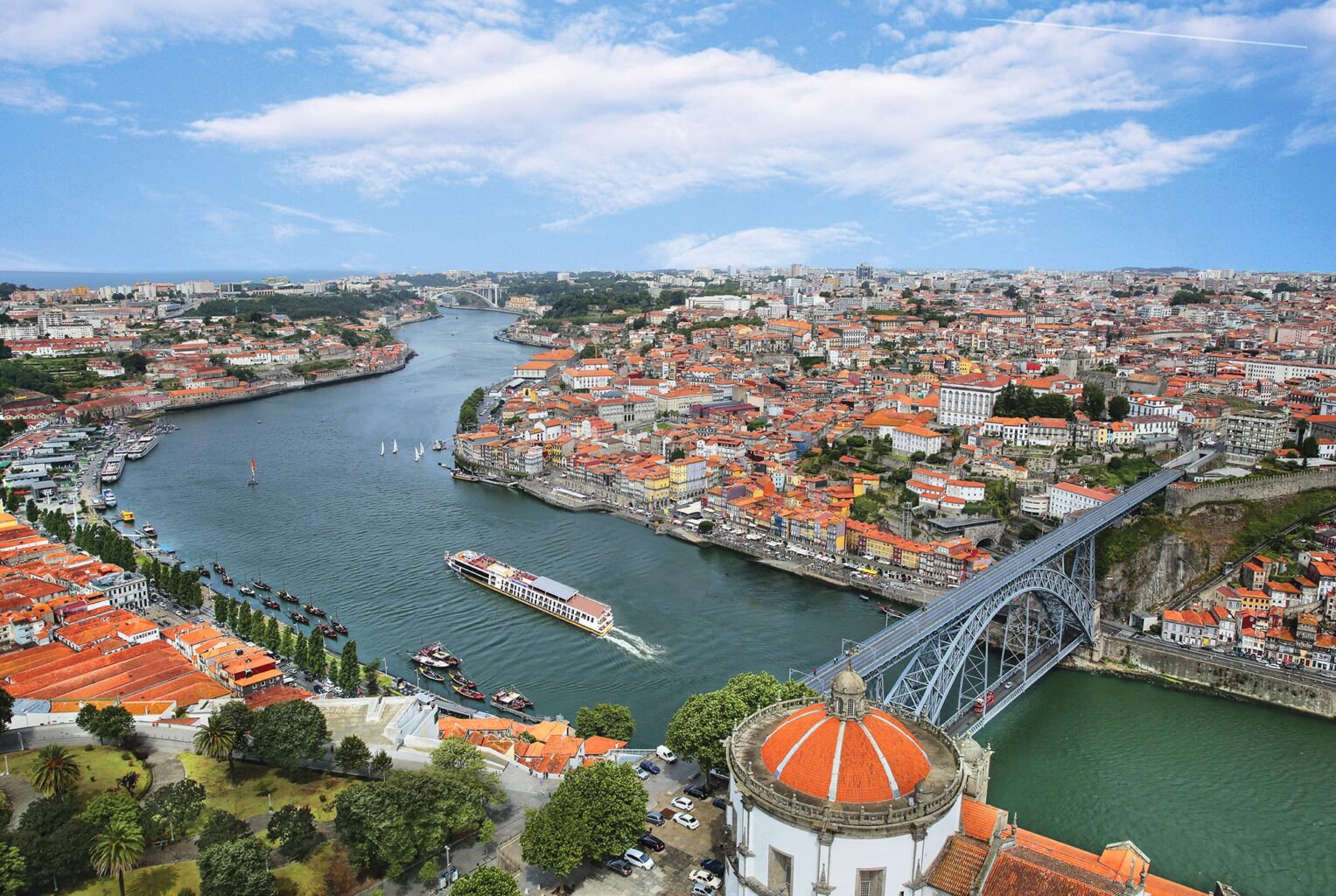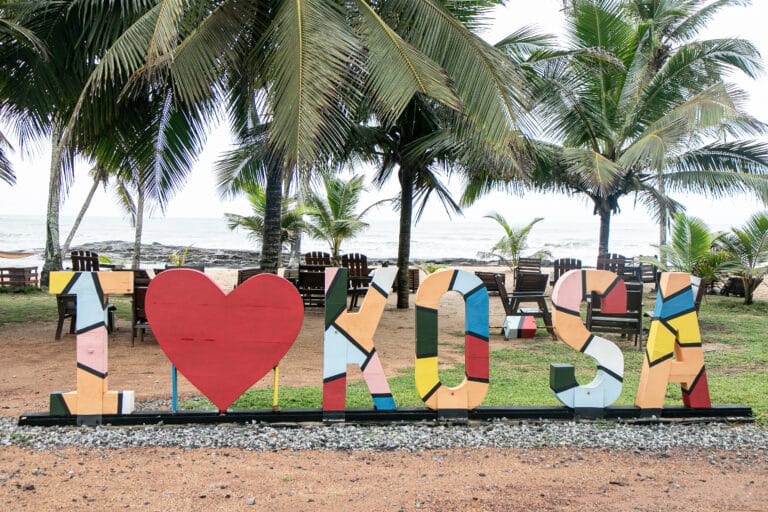|
Getting your Trinity Audio player ready...
|
Yearning for a taste of adventure? Imagine cycling through the glorious hills of Portugal’s Douro Valley to see its terraced vineyards, quaint hillside villages, forests, epic vistas, amazing markets, and farm estates, and later spending your nights aboard a small luxury Douro River cruise ship.
How about spending your evenings dining at fabulous wineries and restaurants ranging from Michelin-star dining rooms to rustic taverns, to elegant farm-to-table restaurants, to no-frills, hole-in-the-wall mom and pop eateries?
Last summer, I had the cosmic fortuity of partaking in such a bike tour and river cruise extravaganza. It was the brainchild of AMA Waterways and Backroads Bicycle Adventures.
Their collaboration resulted in the creation of a truly exhilarating, magical and unique journey that started in Salamanca, Spain, where I joined up with a hardy group of 22 cyclists for the daily bike, food, wine and cruise adventures.
Eight days later, the escapade concluded in the oceanside city of Porto, Portugal. I was grateful and gleeful to have had the strength and stamina at age 72 to participate in such a magnificent experience.
A Majestic Douro River Cruise
The AMA Waterways Douro river cruise ship, AmaVida, is a small, custom-designed floating hotel that accommodates up to 150 guests. Backroads reserves a section of the boat for cyclists.
It features a wide range of comfortable private state rooms, panoramic windows, plush amenities, full private balconies and inviting common areas. Its spacious sun deck is great for daytime viewing of the Douro river’s deep and winding valley and stunning landscapes.

It also provides a relaxing opportunity to stargaze and be mesmerized by the hillside homes’ shimmering lights.
AmaVida has an attentive, knowledgeable and welcoming staff. There is an onboard team of passionate chefs who provide exquisite fine dining on board with complimentary wine, beer, and soft drinks, as well as two authentic Portuguese meals.
Non-biking passengers have a separate itinerary though all guests have the opportunity to partake in the ship’s breakfast extravaganza, a gastronomic ode to the morning, with every possible breakfast offering imaginable. The other joint activity is the daily hosted happy hour.
Cyclists enjoy most of their lunches and dinners at local restaurants and wineries. After dinner, they are free to meander, shop and/or attend local events in the village/city where the boat is docked.
A few distinguishing features of river cruise ships versus ocean cruise ships are that river cruise ships have the ability to dock at smaller ports, which means that they can stop at more quaint locations for authentic cultural experiences. Since river vessels navigate in shallow waters, there’s a lower chance of getting seasick while traveling on a river, as opposed to on the ocean.
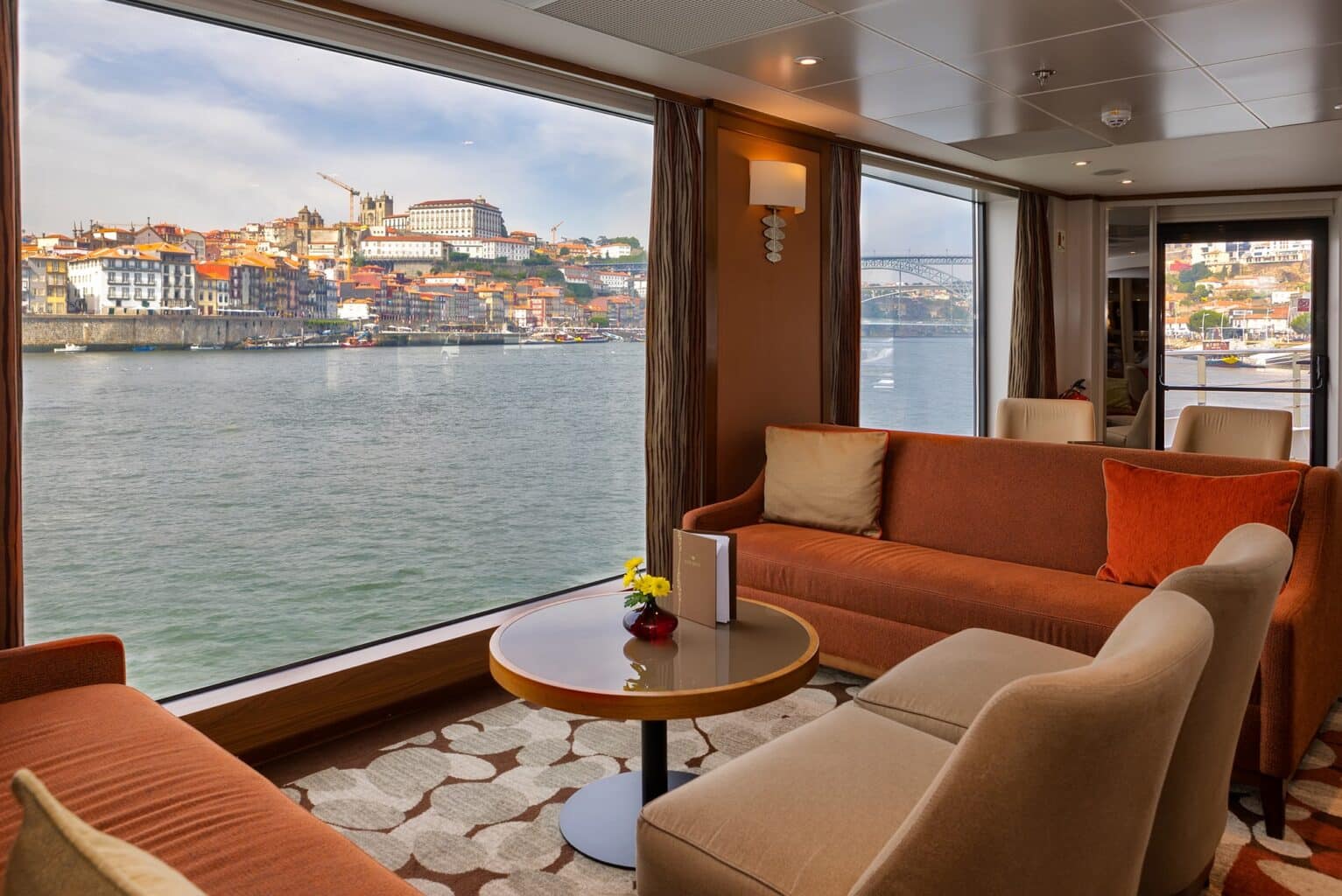
Lastly, river cruises tend to be more expensive than ocean cruises because they are usually all-inclusive, not only providing luxury rooms, most meals and drinks, but also guided tours and excursions.
Backroads Cycling Adventure
The Douro River Valley, a UNESCO World Heritage site, is lined with a patchwork of medieval towns, lush forests, vineyards, forests, almond orchards, olive groves and pastures making it a fantastic location for a cycling adventure.
Upon arrival to the first biking launch site, each participant is matched with a bike or ebike and helmet, which is adjusted to fit, body size and ability. You may also bring your own bike. An electronic GPS navigation system, a lock, safety triangle, rear rack and reflective bag are provided.
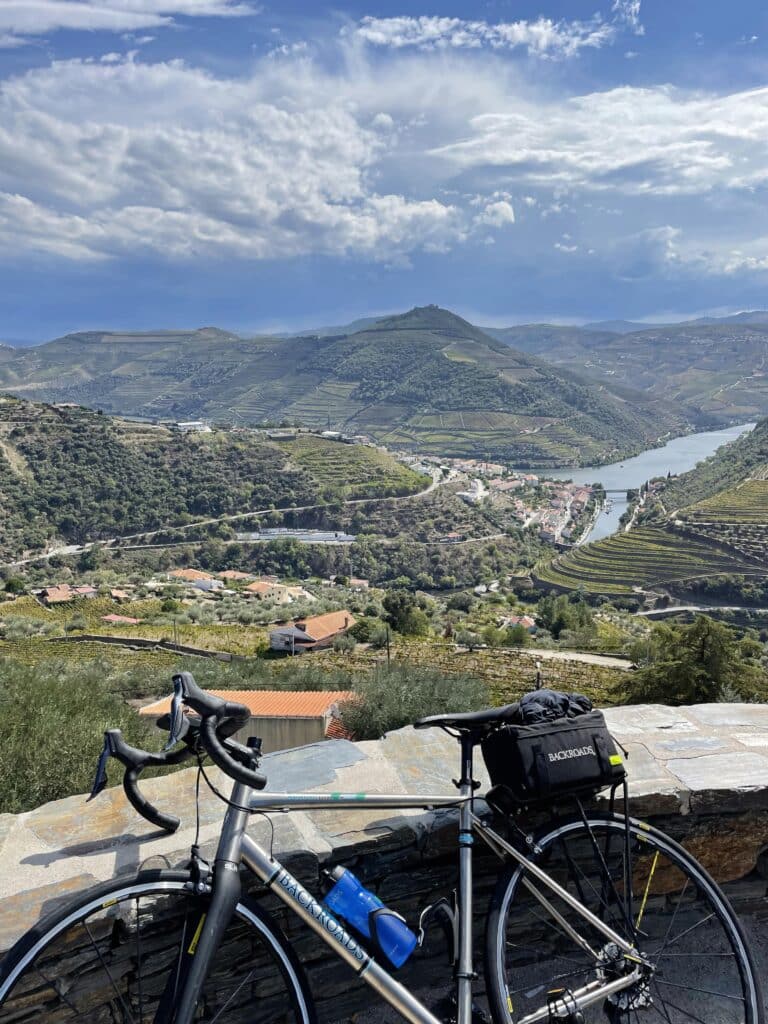
The expertly curated and meticulously planned bike routes are primarily on country roads but occasionally will weave through villages and small cities. The routes have a variety of terrains, from relatively level to rolling hills to steep climbs and descents.
Since the cyclists are of varying levels, there are Backroads staff cycling along the route to help with navigation. A van travels behind the last cyclist, and anyone can opt out at any time and hop in the van.
Each morning upon departing from the river cruise ship, there is a meeting to discuss the bike trails, the stops, and to determine how much or how little of the 20-40 mile journey each person wants to explore.
Before each ride and at many rest stops, the staff sets up hydration stations stocked with fresh fruit and snacks that are available to enjoy there and/or stash for the journey. Other rest stops happen at local bakeries, coffee shops or sidewalk charcoal grills that serve up cheap and delicious Portuguese food.
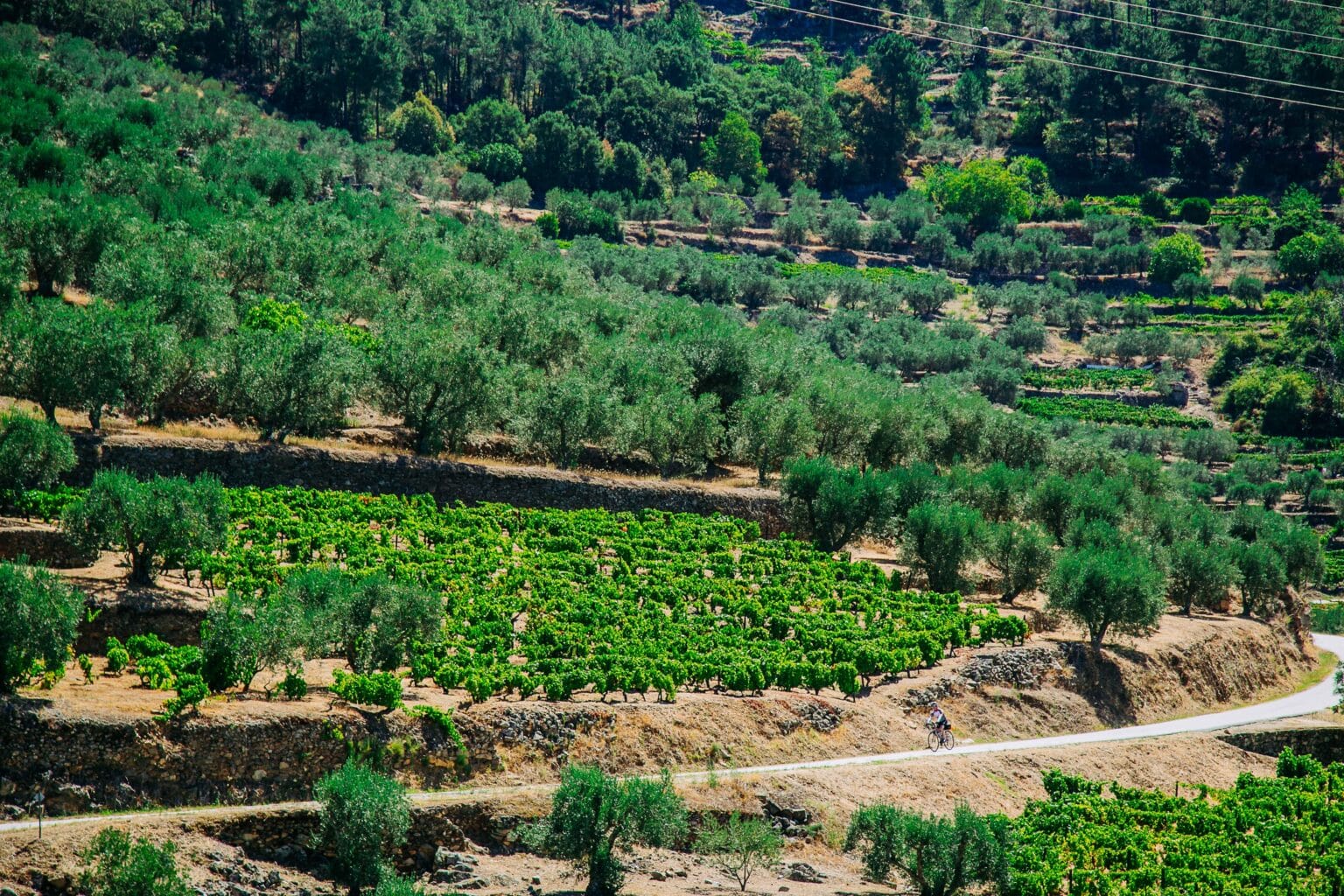
If it turns out that you need a day off from cycling, you can relax on the ship, explore on your own, or join the AMA Waterways team for one of their onshore excursions.
The trip leaders are highly trained in the art of making people feel comfortable, seamlessly handling the logistics of the journey and navigating a wide range of unexpected situations. They are prepared to play many roles, such as guide, host, caretaker, trouble shooter or interpreter.
Their professionalism, thoughtfulness, enthusiasm and service ethics are one of the reasons people return to travel with Backroads again and again.
Portugal’s Diverse and Dynamic Food Scene
Portuguese cuisine is an incredible treat to explore. As a coastal country, it is not surprising that seafood takes center stage, but pork is not far behind.
The meals offered feature regionally authentic and inventive choices and often include a wide range of fresh salads, delicious cheeses, savory soups and stews, and flaky desserts.
As with most Mediterranean cuisines, they usually use lots of olive oil, garlic as well as aromatic spices, many of which hail from South America, Africa and the Middle East garnered from ancient trade routes.

Traditional Portuguese cuisine is rising from the shadows of the more popular European cuisines of France and Italy to claim their own version of a culinary renaissance, which is a remarkable blend of tradition and innovation.
A popular and fun way to sample and savor Portuguese cuisine is at lively tapas-style petiscos bars with popular dishes to include:
- Portuguese-style paella, arroz de marisco, a tomato-infused, broth-based dish where the seafood and rice are mixed together with coriander, piri-piri, bay leaf instead of the saffron and paprika used in the Spanish ones.
- Black pig “porco preto” from the Alentejo region is part pig and boar. Its unique genetic makeup allows them to store fat between their muscles, creating rich marbling similar to Wagyu beef. Their diet of acorns and herbs, along with their range-free life, imparts a unique, complex flavor to the meat, which is celebrated in numerous Portuguese dishes and cured products.
- Piri-piri chicken is grilled butterflied chicken marinated in garlic, olive oil, lemon juice, white wine, paprika and piri-piri spice.
- Bacalhal is Portugal’s unofficial national dish and includes salted codfish, flaked with potato slices, olives, and boiled eggs with lashings of olive oil and onions.
- Pastel de nata, a creamy egg custard tart that is encased in a crispy, flaky crust and often sprinkled with a hint of cinnamon.
Exploring Portugal’s Fabulous Wine and Libations
Port, Portugal’s most illustrious wine, has been produced and exported since the 1600s. The fortified wine is made by adding brandy as it ferments, giving it its characteristic opulent sweetness and depth.
There are several styles of port wine, including red, white and rosé as well as an aged style called Tawney Port, which offers notes of caramel, nuts, and spices.
Even though the grapes are grown and processed in the Douro River Valley, Port gets its name from the city of Porto, where it’s aged in casks or vats before being blended, bottled, and exported.
Port is a Protected Designation of Origin (PDO) wine, meaning it needs to be produced in Portugal from grapes grown in the Douro River Valley to be labeled port. It is said to be the world’s oldest demarcated wine region, a testament to the country’s rich winemaking heritage.

The geological structure of the shale soil and the dry climate contribute to the uniqueness of the grapes grown in theregion.
Another popular wine is vinho verde or “green wine.” The green in its name is not for the wine’s color because it is actually a white wine, that is slightly effervescent, light, fruity, low alcohol, and sometimes mildly sweet. It’s available in most supermarkets and on most menus.
Ginjinha, or simply Ginja, is a Portuguese liqueur made with ginja berries (sour cherries), alcohol, and sugar. The liqueur is served in the form of a shot, with a cherry at the bottom of the glass. It is a favorite for many Portuguese locals, and a must try for tourists.
RELATED: Heading to Portugal? The Best Things to See and Do in Lisbon
Picturesque Porto, Portugal’s 2nd Largest City
The last stop on the Douro River cruise is the vibrant, historic and beautiful city of Porto, where there is an option for a daytime city tour and evening visit to the famed Graham’s Lodge built in 1890. You will enter through its historic cellars where the port is aging in over 2,000 oak casks and 40 enormous oak vats.
This grand tour is followed by a premium wine tasting and capped off with an elegant dinner at their restaurant, Vinum, which offers modern interpretations of traditional Portuguese and Basque cuisines, while admiring a commanding view of the Douro River, Porto’s historic city center and the iconic two-tier bridge that connects the two cities of Oporto and Gaia.
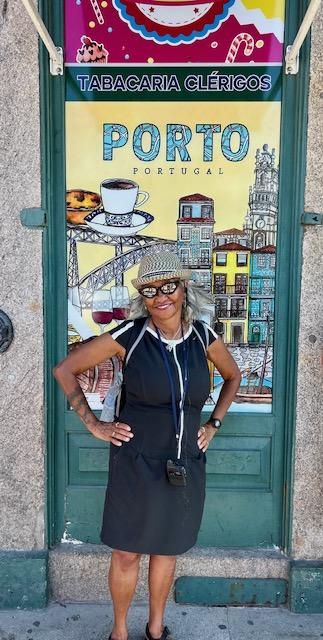
On the final day, the bike ride is on a road beside the Atlantic coast side of Porto and concludes at a tiny fishing village where you will dine on a wide variety of freshly caught seafood that is cooked on an outdoor grill adjoining the dining patio.
If you find yourself in Porto and would like to visit the Douro River Valley, there are companies there that offer 1-8 day river cruises from Porto. A few of the trip’s magical moments captured include:
- BB King Park – While biking through Sabrosa, a hillside town in the heart of the Douro Valley you will see “B.B. King Park” replete with tables, benches, trees, an indoor swimming pool and a museum. It is a tribute to the King of Blues himself on the occasion of his memorable concert held there on May 29, 2010, where over 20,000 people came out to see him.
- Fifth Generation Vineyard/Winery – Cycling through the ancient town of Lamego, you will stop by Quinta Casa Amarela for a luxurious meal in the vineyard’s garden. You will be welcomed by the owners, Gil and/or Laura Regueiro, and provided with a tour of the winery founded by Gil’s ancestors in 1885.
- Dining at Doc – Chef Rui Paula’s Michelin-starred riverside restaurant is located in the village of Folgosa. Its motto is “a space to taste, dare and communicate”. Their incredibly creative, luscious and beautiful tasting menus are a wonderful mixture of art, theatre and deliciousness.
Trips Like This
Trips like this put you in touch with the glory of being alive and fill you to the brim with gratitude for the ability to see, move, hear, taste and swirl.
The combination of cycling, fine dining, wine tasting in Portugal is a magnificent way to have a culturally immersive, dynamic and unforgettable Douro River Cruise vacation.
Consider bracketing this adventure by spending several days in Madrid before the trip and visiting Lisbon after the trip. Backroads provides complimentary bus transportation from Porto to Lisbon, making it convenient to move from city to city.
There is plenty of time to plan and get ready for the next Douro River Cruise Bike Tour taking place April – October 2026. Visit Backroads online for dates, the full itinerary and more details. You can also visit their YouTube channel to watch previous experiences.

